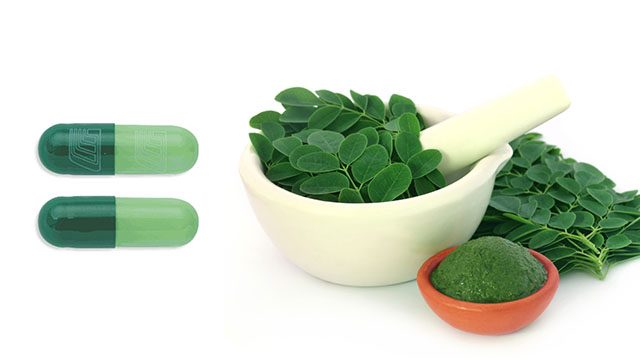SUMMARY
This is AI generated summarization, which may have errors. For context, always refer to the full article.

MANILA, Philippines – There seems to be more women making the choice to breastfeed these days, which is a great thing. According to the Philippine Commission on Women, “breast milk is the best food since it contains essential nutrients completely suitable for the infant’s needs.”
Mothers want to give their children the best, but they get a little shaken in their resolve to breastfeed once they realize that it is not as easy as it looks. There are proper techniques and even breastfeeding positions to learn, on top of minding your disposition and diet to ensure that breastfeeding is done safely and with ease for you and the baby.
The good thing is that information and support is more easily accessible than before. There are plenty of websites and blogs for breastfeeding mothers in all stages of their journey – from feeding a newborn to extended breastfeeding. There are online forums and support groups that you can join, too.
Breastfeeding can be tough, but you are not alone and help is available.
Breastfeeding is not automatic
Abi Alcaide-Catapang was able to breastfeed her daughter Arella Jean, nicknamed Ellie, thanks to the guidance of the nurses in the hospital where she gave birth. It was when they went home that they started experiencing difficulty. Ellie couldn’t feed properly and was always crying.
The new mom suffered from sore nipples and engorged breasts, and relatives were starting to tell her to give her baby formula. “Pag iyak ng iyak si Ellie noon, ayan, sasabihin na ng ibang relatives, ‘bigyan niyo na ng formula, hindi siya nabubusog eh kaya iyak ng iyak, ’” she recalls. (When Ellie would cry a lot at the time, relatives would tell me to give her formula. They tell me that she is hungry that’s why she’s always crying.)
Breastfeeding is challenging
New mothers like Abi are particularly vulnerable to quitting breastfeeding, especially when they are still recuperating from giving birth. For Abi, she found herself at a loss when the nurses were no longer around to show her what to do. “Iba ‘pag nandun ka na, you’ll find that the books you read or the things you read online can’t really help you.”

Not a lot of people are aware that if not done properly, breastfeeding can be incredibly painful, with the mother suffering from injured nipples or areolas.
There is also a perception that breastfeeding is something that should come naturally to women, but the reality today is that breastfeeding is like a newly acquired skill that needs to be honed with diligence. Some mothers find it overwhelming at first, but it gets easier with a lot of practice.
The first milk that may not look like milk is the most important!
Breast milk production comes in stages – colostrum, transitional milk, and then mature milk. It is easy to disregard the first stage milk, colostrum, because it may not appear as white or as thick as you think milk would be. You may have even leaked a little of it during the final days of your pregnancy.

But according to Nona D. Andaya-Castillo, an International Board Certified Lactation Consultant and one of the founders of Nurturers of the Earth, a support group for earth-friendly parenting and lifestyle, “Colostrum is a concentration of antibodies that appears at the onset of lactation or breastfeeding. It’s the first milk. It’s also called the ‘gold milk’ because sometimes its colored yellow. But colostrum can come in many colors. Sometimes the mothers would be surprised when it’s not white. Before, they even thought it was dirty and they would throw it away.”
Colostrum serves as the child’s shield against harmful microorganisms outside of the uterus. It is higher in proteins, minerals, salt, vitamin A, nitrogen, white blood cells and certain antibodies. It comes concentrated the first days of breastfeeding but it is present until the last day you breastfeed.
No need to panic over milk supply – a ‘little’ colostrum is enough
Because colostrum appears like it only comes in trickles, some moms tend to panic and think they are not producing enough milk. However, Nona says that milk production typically peaks 5 days after giving birth. By then the mother would be producing about 2 ounces of breast milk per feeding.
New moms should also take note that a newborn baby’s stomach is tiny at this stage – approximately the size of a quail’s egg. The colostrum is satisfying the baby’s hunger and nutritional needs. But if you are still worried that you are not making enough milk, Nona advices monitoring the baby’s urine output. He should be going through 6 to 8 wet diapers in a day.
Mastering latching is a must

Incorrect latching is usually the culprit behind painful breastfeeding. Abi was able to determine that this was the cause of her breastfeeding problem after consulting with a lactation expert.
The baby’s mouth should be wide open so that the mother’s nipple can get through the soft palette. The nose and chin of the baby should also be pressed against the mother’s breast. You will notice that with a correct latch, the baby’s mouth covers almost the entire areola area, and not just the nipple.
Breastfeeding shouldn’t hurt, but if you feel pain, gently insert your finger between the baby’s mouth and your breast to break the latch, and then try again. Carrying on breastfeeding when feeling discomfort or pain already will lead to sore nipples and potentially greater injuries to your breast. The baby is also not getting the sufficient amount of milk this way, and it might lead to more frustration if left unaddressed.
If your nipple area already has some wounds, the ideal treatment is none other than your very own breast milk. Express a little amount on a cotton ball and continuously wet the affected area with breast milk. Get it air dried as much as you can as well, and refrain in the meantime from wearing a bra or restrictive clothing. The antimicrobial and natural healing properties of the milk will heal the wounds in no time.
Eat well not just for your health, but also for optimum breast milk production

The importance placed on maintaining good health and ensuring the intake of the right amount of nutrients doesn’t stop during pregnancy. It continues for the breastfeeding mother as the primary source of the baby’s food especially for the first six months.
For Nona, the breastfeeding mother’s diet is simple, “Eat a lot of fruits and vegetables and you can’t go wrong. You will be healthy, you will not get sick and your baby will get more nutritious food.”
Breastfeeding supportive obstetricians usually prescribe a malunggay supplement for the expecting mother 2 to 3 weeks before her due date. Once the baby is out and the mom has gotten used to breastfeeding, she can still take malunggay supplements as a galactagogue – any kind of substance that promotes or increases lactation.
Malunggay is considered as the lactating mother’s best friend because it is a natural galactagogue, in addition to being a nutritional powerhouse. It joins a wide range of vegetables and fruits typically served to nursing mothers to enhance their milk supply and production, such as garlic, spinach, nuts and papaya.
Malunggay can also help boost the mother’s immune system while making sure that her own resources are not depleted by breastfeeding.
Malunggay supplements provide a ready option for mothers to meet their nutritional needs while enhancing their milk production, especially if they’re not quite fond of drinking milk or lactation teas. In the case of Abi, she continued taking malunggay supplements because it’s a great source of calcium and it helps keep constipation at bay.
Breastfeeding can be a real test of will. Know that even if you attend all the seminars, read everything online and buy all the books, everything can still get tossed out the window once the baby is placed in your arms. Take heart. What’s important is to not lose focus and seek help if you need it. Remind yourself why you wanted to breastfeed in the first place. – Rappler.com
Mothers, if you need help with breastfeeding, feel free to contact these groups:
Arugaan
Ines Fernandez or Velvet C. Escario-Roxas (+63 915 7741614)
Tel Nos.: +632 490 5452; 426 3918
Nona Andaya D. Castillo, IBCLC or Dr. Elvira Henares-Esguerra
Mobile: +63 915 399 9992; 0998 998 9953
Tel Nos.: +632 218 7777
Lactation, Attachment, Training, Counseling, Help (L.A.T.C.H.)
Buding Dee (+63 917 8920195)
Jen CC Tan (+ 63 917 5325643)
Mobile: +63 917 532 5643
Cris Rosenthal (+63 917 8941099)
Tel Nos.: +632 725 0776; 721 9388
Mobile: +63 917 88BIRTH; 0920 9052737
Jencel Marcial (+63 917 5958707)
Sources:
http://www.pcw.gov.ph/law/republic-act-7600
http://www.rappler.com/life-and-style/family/37840-why-you-should-care-about-breastfeeding
http://www.rappler.com/life-and-style/wellness/34031-make-breastfeeding-work
http://www.babycenter.com/0_making-breast-milk-how-your-body-produces-natures-perfect-ba_8785.bc
http://www.babycentre.co.uk/x553877/how-will-i-know-if-my-baby-is-latched-on-correctly
http://www.who.int/nutrition/topics/exclusive_breastfeeding/en/
http://ph.theasianparent.com/malunggay-really-improve-breastmilk-supply/
http://bepls.com/dec_2012/4.pdf
http://www.chroniclesofanursingmom.com/
Breastfeeding is the pinnacle of a mother’s love. Natalac is the first clinically proven effective lactation enhancer in the Philippines. 3 separate studies conducted between 1994 and 1995 show that mothers who took Natalac saw an increase in their milk production and their infants showing substantial weight gain. Natalac supports mothers in their breastfeeding journey with quality Moringa Oleifera supplements. Stay tuned for more facts and insights on breastfeeding and the power of Moringa.
Add a comment
How does this make you feel?






There are no comments yet. Add your comment to start the conversation.